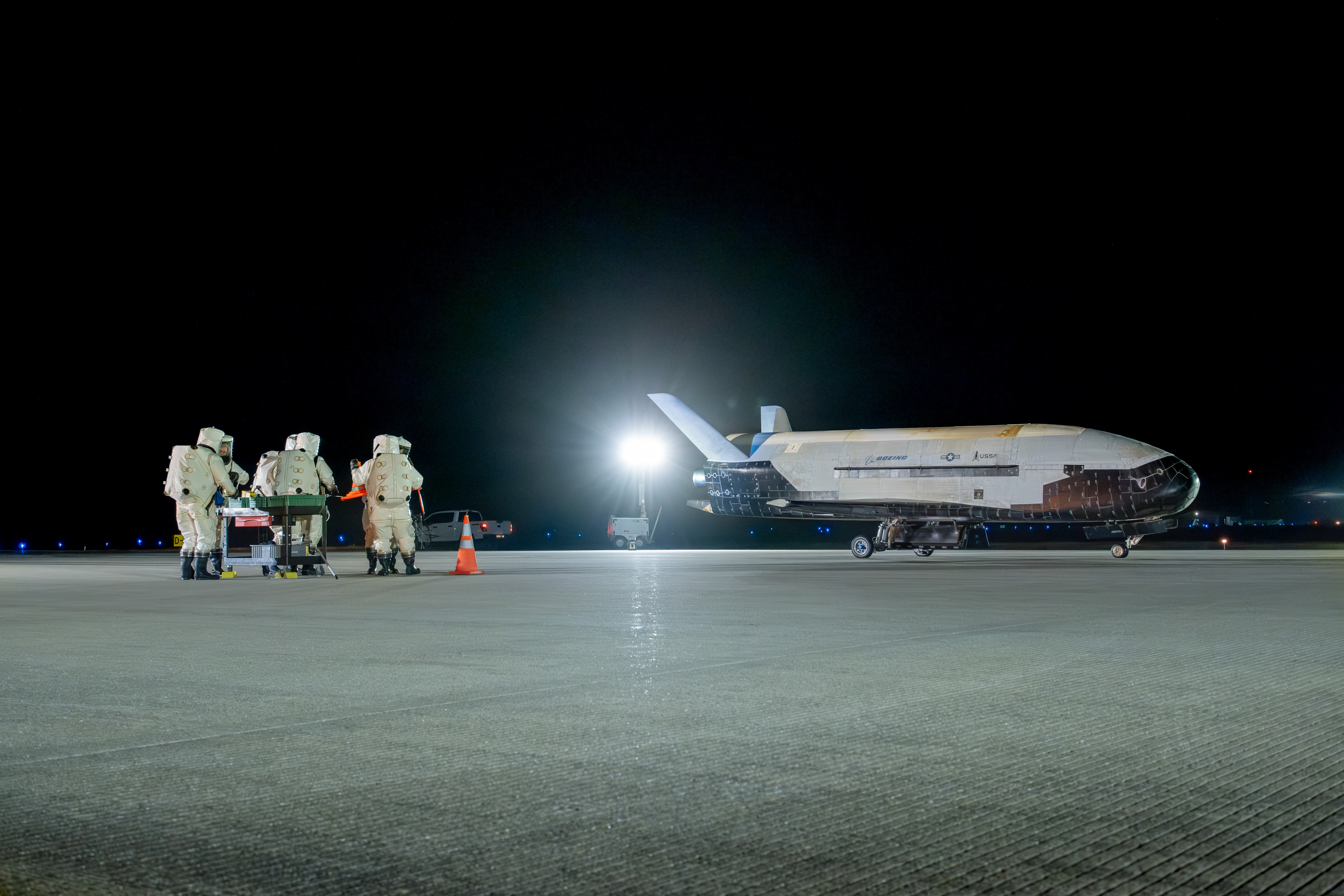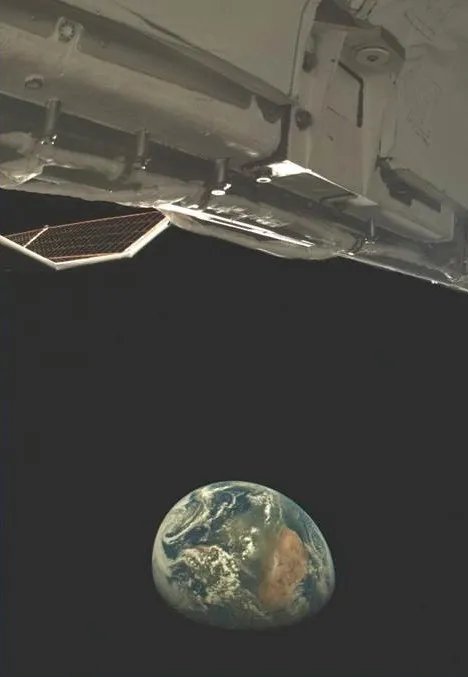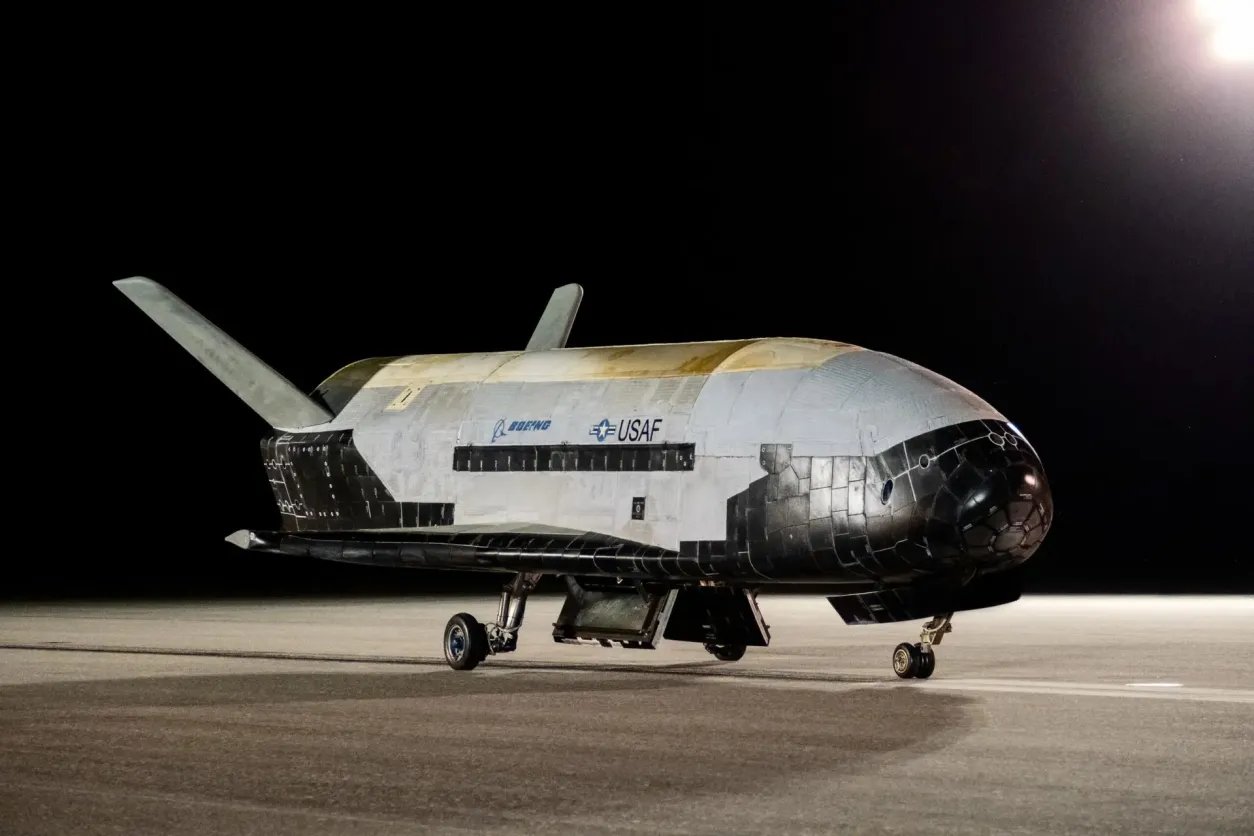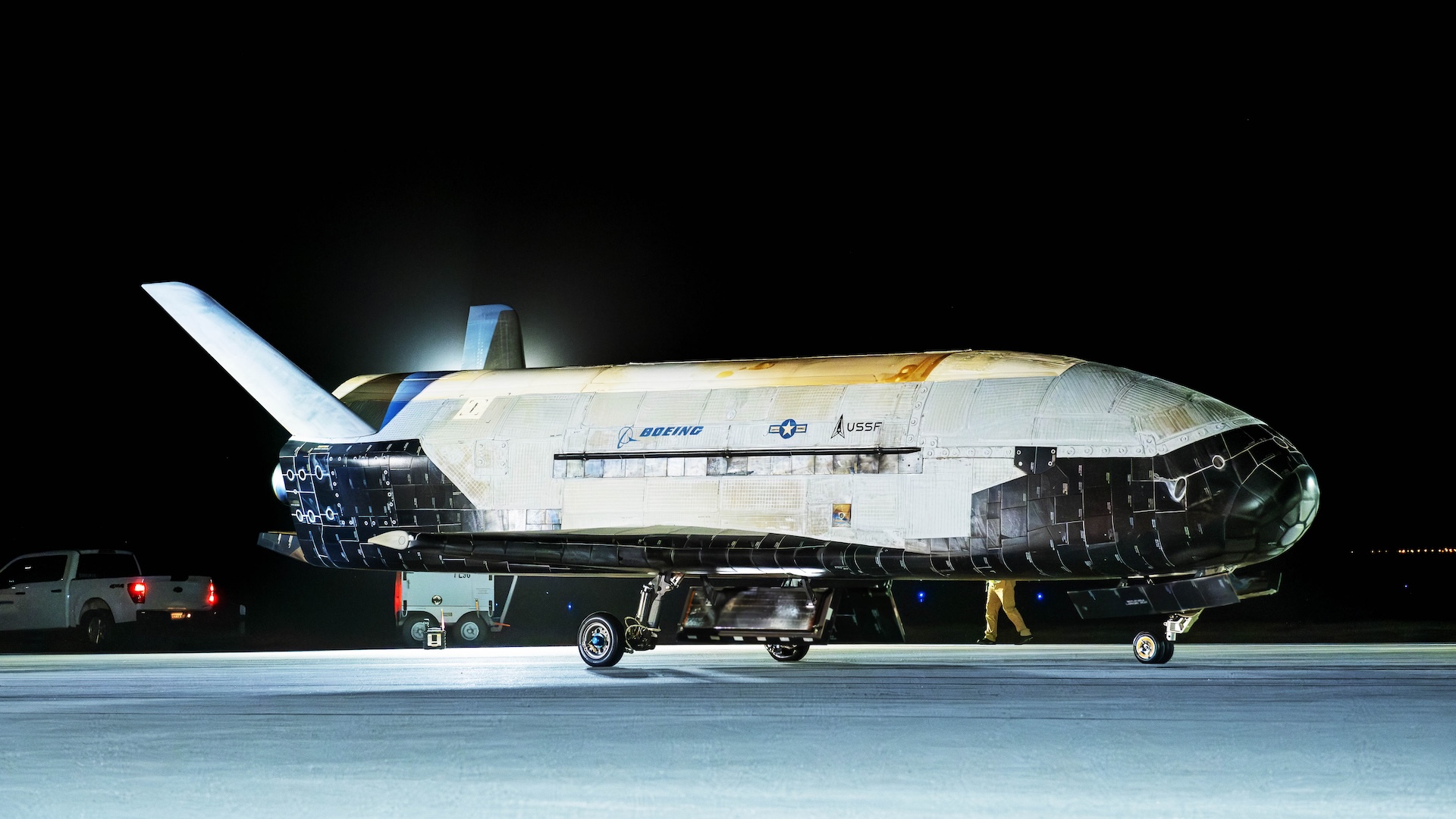After 434 days, the U.S. Space Force’s secretive X-37B mini-shuttle has completed its seventh mission, returning to Vandenberg Space Force Base, California, at 2:22 a.m. EST today. The Orbital Test Vehicle-7 (OTV-7) mission was the first launch on a SpaceX Falcon Heavy Rocket — meaning that the X-37B could be placed in a much higher orbit than on previous missions, as TWZ previously explored. OTV-7 was also the first mission to use a highly elliptical orbit. At this point, however, the Space Force has said it won’t buy any more X-37Bs beyond the two now in use.

OTV-7 was launched from the Kennedy Space Center in Florida on Dec. 28, 2023.
“While on orbit, Mission 7 accomplished a range of test and experimentation objectives intended to demonstrate the X-37B’s robust maneuver capability while helping characterize the space domain through the testing of space domain awareness technology experiments,” the Space Force said.
The Space Force released few details of what the X-37B got up to on its latest mission, which is very much in keeping with the level of classification that surrounds the program.
However, OTV-7 included operating the reusable spaceplane “in new orbital regimes.” As such, the mission took the X-37B beyond the so-called geostationary orbit (GEO) belt around the Earth, as you can read more about here.
Orbits that take spacecraft beyond the GEO belt — which is defined as being around 22,236 miles (35,786 kilometers) above sea level — are categorized as high-Earth orbits (HEO).

As previously noted, OTV-7 involved taking the X-37B for the first time on a highly elliptical orbit (confusingly, also known as HEO).
The egg-shaped HEO trajectory allows the spaceplane to maneuver itself once it’s close enough to the atmosphere. This is especially advantageous when it comes to keeping potential adversaries guessing as to where the X-37B is since the spaceplane can reappear unexpectedly in orbit.
“We know that that drives them nuts, and I’m really glad about that,” former Air Force Secretary Heather Wilson said back in 2019 in reference to the HEO trajectory.

In its statement today, the Space Force referred to the importance of the series of aerobraking maneuvers, used for the first time, which “demonstrated the agile and flexible capabilities the X-37B provides.”
Specifically, aerobraking is used to change the orbit of the spaceplane while expending minimal fuel. Aerobraking involves the spaceplane using the drag of the atmosphere, over the course of multiple passes, to dip into low-Earth orbit (LEO), during which it can separate from its service module.
“Mission 7 broke new ground by showcasing the X-37B’s ability to flexibly accomplish its test and experimentation objectives across orbital regimes. The successful execution of the aerobraking maneuver underscores the U.S. Space Force’s commitment to pushing the bounds of novel space operations in a safe and responsible manner,” said Chief of Space Operations Gen. Chance Saltzman.
In a recent interview with Aviation Week, Saltzman also confirmed that the aerobraking maneuver was used to evaluate the Space Force’s Space Surveillance Network, a collection of optical and radar sensors used to detect, track, identify, and catalog all human-made objects in orbit.
The Space Force’s statement today also referred to the fact that Mission 7 included “space domain awareness technology experiments that aim to improve the United States Space Force’s knowledge of the space environment.”
As is typical for these missions, no further details were provided, although these experiments appear to tie in with the Space Force’s broader effort to locate and identify objects in distant orbits, as well as maneuver close to them in order to inspect them or assess their capabilities. The service’s Geosynchronous Space Situational Awareness Program, or GSSAP, is intended to achieve just this, and you can read more about it here.
“These technologies are critical to the U.S. Space Force’s ability to conduct space operations in an increasingly congested and contested environment of space, to the benefit of all users of the domain,” the service added, in reference to space domain awareness experiments.
Other features of OTV-7 include the first release of a photo of Earth taken by an X-37B. In fact, this was likely the first in-orbit shot from the craft of any kind to be officially released by the Pentagon.
The image of Earth was taken “while conducting experiments in a highly elliptical orbit,” and the camera itself is primarily used to “ensure the health and safety of the vehicle,” the Space Force said. You can read more about it here.

At the Air & Space Forces Association’s 2025 Warfare Symposium this week, the Space Force told TWZ: “Any future plans to build additional platforms beyond the two existing test vehicles will be evaluated based upon the nation’s need.”
The Space Force has also said it has no plans to use the X-37B as an operational vehicle, but the various experiments it has been carrying out will feed into any potential future U.S. spaceplane designs.
At the same time, the current two-ship X-37B fleet will also provide a better understanding of how adversaries could use similar systems. In particular, China has been busy testing a spaceplane, named Shenlong (meaning Divine Dragon), which is thought to be broadly comparable to the X-37B.
In the meantime, the X-37B has continued to conduct its highly classified missions, with the high level of classification fueling speculation about its potential use as space-based intelligence, reconnaissance, and surveillance (ISR) or weapons platform.
What we know for sure is that the X-37Bs are assigned to the Space Force’s main unit tasked with “orbital warfare,” meaning they have an explicit military role. Notably, the X-37B that returned to Vandenberg today was wearing U.S. Space Force markings, rather than those of the U.S. Air Force, which had been applied during the previous OTV-6 mission.

This change may well also reflect a growing effort to communicate to the public about the importance of space to military operations (and daily life) and potential threats outside of the Earth’s atmosphere, as well as what the U.S. government is doing about those issues.
Nevertheless, there is much more that we don’t know about the X-37B than has been revealed to the public. The OTV-7 mission accomplishments are already being praised in terms of milestones in a new orbital regime, the novel aerobraking maneuver, and the testing of space domain awareness experiments. Certainly, however, there are many more significant achievements from OTV-7 that will remain under a veil of secrecy.
Contact the author: thomas@thewarzone.com
